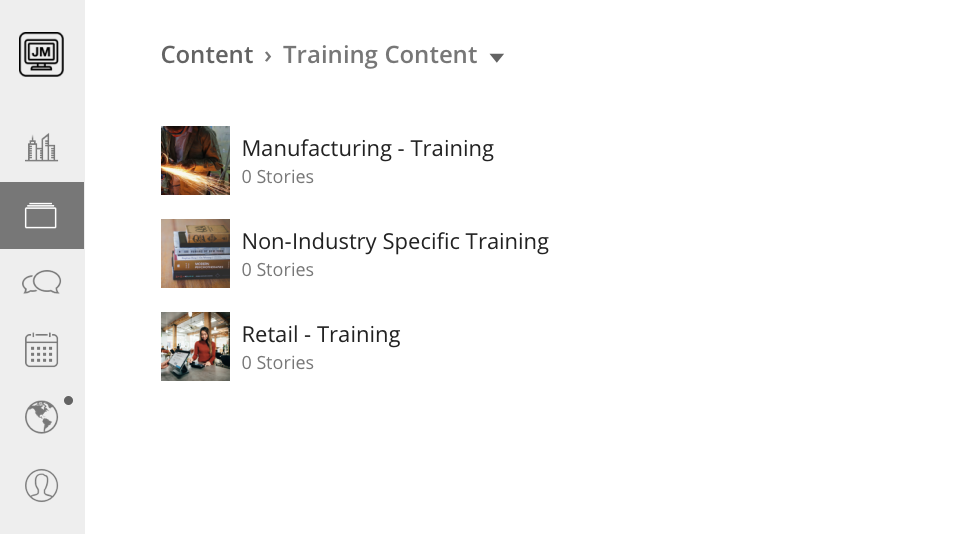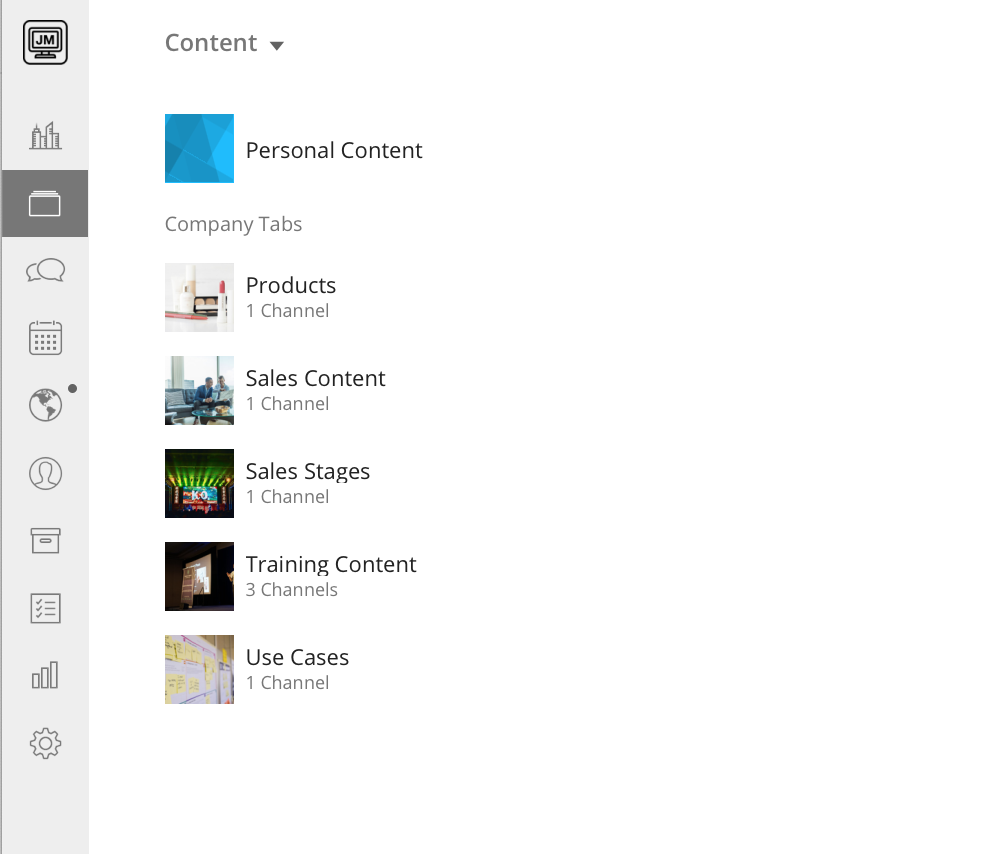In some cases we learn more by looking for the answer to a question and not finding it than we do from learning the answer itself.
-Lloyd Alexander, American Author, not a Sales Enablement Professional responsible for helping sellers find the right sales content :-)
While Alexander knew how to write stories, he was never a salesperson.
How often have you been in front of a customer trying to find the answer to a question they asked?
Those seconds tick by slowly, like hours passing with every tick.
When you are looking for an answer, you are not interested in the journey. You are only interested in finding that answer.

Ensure your sellers can find the right sales content
Whether we are discussing Sales Enablement or Revenue Enablement, you need to make sure your sellers can find the right sales content.
As a simple starting point, we can layout the content based upon the design we put forth in our article titled "Determining your Sales Enablement Content Needs." As a quick refresher, we documented all the content the team needs based upon how you sell.
We first began by taking a look at how you sell, for example:
- Do you sell multiple products?
- Are you focused on selling vertically or horizontally?
- Do you focus on selling products and features, or do you focus on solution selling?
- Does your messaging change at different stages of the sales cycle?
- Do you sell to various personas in the customer organization?
- Do you sell based upon specific use cases?
We took a look at how Bigtincan sells, at a high-level, and focused on Industry. We created this spreadsheet, based upon our vertical focus.

Let's take a moment and quickly review what this could look like in Bigtincan.

While this may feel simple, it is for this reason that it is a good starting point. It is quick to set up and enables your sellers to begin finding the content they need quickly. With two simple mouse clicks or taps on your phone or tablet, you have found the content you need.
Now, step back and review the conversation you had with the sales managers about how your team sells.
Are their specific use cases that your solutions target?
Do they have certain pieces of content that best align with particular phases of the sales process?
Often you will find one group of sellers approach their jobs from one perspective, and another group approaches it from another direction. Consider baking this into your structure.
Let's take a different approach with our content structure to explore other alternatives.
For example, again, in Bigtincan:

This simple adjustment has enabled our sellers to find the content they need in a structure best aligned with how they think.
Are they helping a prospect identify a solution for a specific use case?
Is the seller looking for information about a particular product?
What best practices can you use to help your team find the right sales content?
Consider the following methods to simplify the lives of your content consumers.
- Your structure should not have more than 5-10 items at any level. Hick's Law makes it clear that the more choices you give a user, the longer it will take them to decide a path forward. The smaller the number of options at each level, the easier the structure will be to navigate.
- You don't want your structure to go deeper than three levels. Apple has shown that no more than three clicks are the best practice not to frustrate people.
- Make sure you tag content in a manner that works well for the platform's search capabilities.
Tagging? Search? Yes, we haven't gone there yet, but it's now time to jump in.
How can we use tagging?
We have already stated that we want to limit each level to no more than 5-10 items. However, sellers may have multiple ways of thinking about content that make this simple layout too limiting.
What's an Enabler to do? Use tags.
The best organizations use systems that enable powerful search capabilities. For example, in Bigtincan, you can search through the content of files you upload, but you can also add additional metadata to simplify the search along other dimensions.
Let's step back for a moment and review the structure we last setup.

While this structure is okay, we may find it beneficial to simplify the content structure further, further reducing the choices our sellers need to make at the top level. For this example, let's streamline this to keep our sellers focused on selling by either product or by specific use-cases. We will use tags for additional information. This change leaves us with a much-simplified structure.

This new structure simplifies the lives of our sellers even further. They go down one of two paths; use case or product. Most sellers will find everything they need with this more straightforward layout.
However, what about content that does not cleanly fall into these buckets?
Or, what about content that is relevant to a specific sales stage or some other dimension we have?
As is often the case, we will go forth and create another spreadsheet. This time, the worksheet will provide a framework for our tagging strategy, both for the content creators and the content consumers. Create the sheet in this manner:
- The top of each column should contain the tagging dimension. For example, Industry, Content-Format, Content-Type, and any other aspects you might want to enable your team to search across.
- The rows beneath each column should contain the possible tag values — for example, Retail, Battle Card, PDF, and so on.
Remember, this sheet will be a guide that your content creators use for each piece they put into your Sales Enablement solution. Your choices must also make sense to those searching for content.
Here is an example of what the sheet may look like for you.

--
Bigtincan provides rich analytics, allowing you to determine what content is being used as well as what search terms your content consumers are using. Take time each month to review how your sellers are searching and:
- Update your tag list if you identify gaps.
- Educate your sellers on the latest tags.
- Update content as required.
Review your findings with both sales managers and sales reps to ensure you are interpreting the data correctly. You may discover that your team is looking for more Battle Cards than you have currently provided, for example. Perhaps the team is never using and never searching for content in the Retail vertical. Why?
I can't tag everything, how else can I help my team find great sales content?
I am regularly amazed by the amount of content some businesses have in place. I have seen more than 10,000 pieces of content and often hear of business with a few thousand. It may not be feasible to tag everything, and dumping all of those materials into a content structure will be a nightmare for content managers and unusable for sales teams.
As we discussed in an earlier article, take the feedback form, and keep it in front of your content consumers. If they cannot find something they need, have them fill out a form and tell you.
- Respond to this type of request quickly. Agree upon an SLA with the Sales Managers and stick to it. Delays will negatively impact revenue opportunities.
- Follow the guidelines discussed throughout this document. Is the content up to date and on-brand? Do you have the content, or do you need to create it?
What's next on the sales content journey?
I know this process will bring you from the content jungle, or content desert, to a place where your sellers can successfully leverage your
You have probably already caught on. Helping your teams find the right sales content is not a one-and-done activity. It requires regular data analysis, ongoing content maintenance, and constant collaboration. Done well, you will help your business be more successful.
So here is my final question.
If you are not yet doing all of this, why not?
Can your business afford to leave money on the table?
